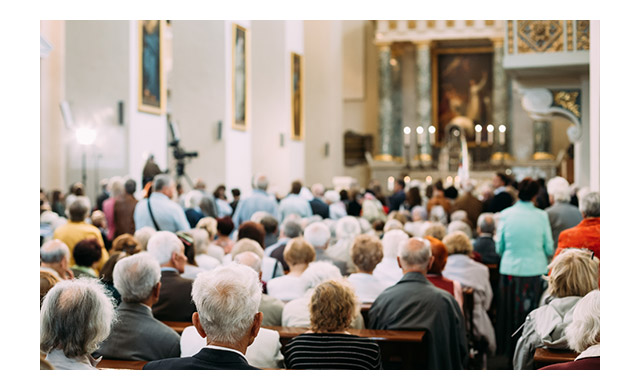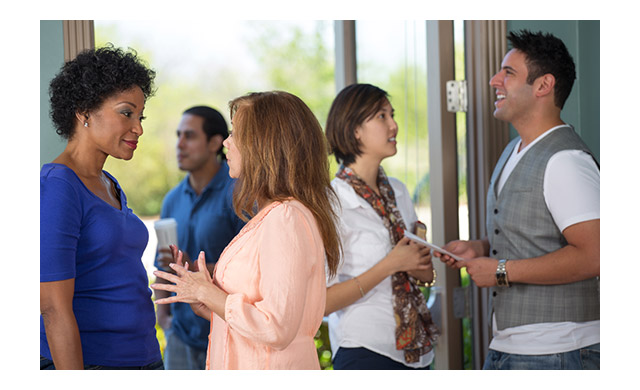Rediscovering the Magic of Church Beyond Easter & Christmas
The role churches can play in ending the loneliness epidemic.
Mar 30, 2024
Written by our Founder and CEO, the Celebrations Pulse letters aim to engage with our community. By welcoming your ideas and sharing your stories, we want to help you strengthen your relationships with the most important people in your life.
From the smallest chapel to the grandest cathedral, Christian churches around the world today are filled with people reaffirming their faith by celebrating Jesus’ resurrection. Pastors often describe Easter as one of the “standing room only” days, with Christmas being the other.
Those of you who attended probably couldn’t help but notice the diversity of people in the congregation, the warm atmosphere, and the fellowship. When you weren’t singing or praying, you were socializing. You likely felt welcome and part of something bigger than yourself.
Churches, of course, offer religious lessons, but they’re also a place of connection where you can meet new friends and reconnect with old ones. I saw this growing up when my parents spent hours taking the 10-minute walk home after church every Sunday.

Regardless of denomination or even religion, services are reminders of the role churches, temples, and mosques can play in our community beyond offering spiritual advice. With more than half of all Americans feeling lonely or isolated, places of worship can serve a role in reversing what experts call the loneliness epidemic.
Time to revisit church?
In January, I noted that overall church attendance – outside Easter and Christmas – has been falling in the United States. A Gallup study released just last week showed only three in 10 adults now attend religious services regularly (every week or almost every week), down 12 percentage points from two decades ago.
That Celebrations Pulse noted how the change aligns with the loss of other parts of our social infrastructure, like local bars, social clubs, physical offices, and more. At the same time, we’re spending more time “connected” to our phones and other screens.
I’m not the only one who has noticed the connection between rising loneliness and fraying social infrastructure. “I think the withdrawal of religion has had very negative effects,” New York Times columnist David Brooks told me in a recent Celebrations Chatter podcast. “Churches, synagogues, and mosques have something else in common: What the physical congregation offers.”
That’s a sense of belonging to a community. Besides services, many churches have book clubs, theater companies, spaghetti nights, coffee klatches, carnivals, and a host of other activities. It’s an opportunity for congregation members to come together, get to know each other, and develop relationships. And the low number of those attending services means fewer people are getting involved with the community that surrounds churches.
Feeling the loss of community
The response to January’s letter was overwhelming. Many community members shared stories of how their connection to church has changed over the years.
Carole told me about how she and her husband belonged to a church early in their 44-year marriage. They became involved in a ministry that helped people in Mexico and, later, Kenya. But over time, the ministry’s leadership changed. Carole and her family did not agree with the new path and felt excluded. Carole continues:
I still have faith in a loving God who is not controlling us like puppets but crying with us when we hurt. It is extremely lonely, not having a place to worship or a community to share or friends.
To me, stories like Carole’s suggest that it’s not just technology that’s affecting church attendance. Churches themselves need to be part of the solution to reverse the trend.
A new direction
A few years ago, a friend introduced me to Jim Bechtold, who was a marketing executive for consumer giant Procter & Gamble at the company’s headquarters in Cincinnati for over 20 years. In the 1990s, Jim and two marketing colleagues started a small Bible study group in suburban Cincinnati.
The group quickly grew and started convening at a local junior high school auditorium. Then the three founders raised funds, purchased an abandoned retail supercenter, and built their first church, Crossroads Church, that could seat over 1,000 people.

Jim and his partners used their marketing skills to inform local residents about what the church had to offer. Over the years, they built Crossroads Church into one of the fastest-growing churches in the country. They currently have eight locations throughout Ohio and Kentucky.
Jim told me that Super Bowl Sunday is traditionally a very slow day at all churches, so he and his team had an idea. They took advantage of the day and created several events and activities that provided social interaction for all the church’s members. Jim said that instead of empty pews on the holiest day of the football season, their locations attracted nearly 6,000 people!
Beyond a sermon
After getting to know Jim, I realized pastors, in addition to the responsibility of being a good preacher and delivering a great homily, also have a social responsibility as welcoming hosts to the communities around their churches.
Crossroads’ methods might not work for everyone or every denomination, but pastors everywhere should try to take lessons from its success.
All the best,
Jim
Celebrating the Rituals of Easter

Many families cherish Easter traditions that range from church rituals to longstanding family activities passed down through generations. In last week’s poll, nearly 30% of you identified attending services as your favorite part of Easter. It was followed by Easter dinner with family (20%), Easter basket treats (18%), brunch (18%), and Easter eggs (16%).
A number of you also shared inspiring stories. Here are just a few of the overwhelming number of responses.
Deb remembers visiting several churches of different denominations as she was growing up. In her hometown, Easter was truly a community event.
Each church hosted a night. There was a break in these services for years, but now we are back to having Holy Week services for six nights with churches from two denominations joining together to worship and celebrate. It is a beautiful collaboration.
Kay’s Easters started bright and early when she was young.
“We went to sunrise service and watched the sun come up over the mountains. When we got home, we put the ham in the oven and began searching for Easter baskets that were hidden by Mom and Dad. After that, we all ate great food together as a family and counted our blessings.”
Cindy grew up in a Chinese American household where she learned the traditions of Easter.
When introduced to the idea of dyed Easter eggs, my mother readily took to the tradition. As a child, I reveled in the pastel colors of the eggs. From classmates, I learned of the tradition of Easter egg hunts that further fired my enthusiasm for this new and unique Easter holiday. It was from a subsequent introduction to a Christian church that I learned of the true significance of Easter. What a revelation and life-changing event.
And El spreads the joy of Easter through her neighborhood.
One favorite Easter activity is to hang colorful plastic eggs that contain an Easter candy surprise on our yard's Rose of Sharon tree. When anyone walks by, they are invited to take one or two Easter eggs for their enjoyment. The neighborhood children get a big kick out of this activity and their joy brings me happiness.
Thank you to everyone who took the time to share your favorite traditions with the community.








